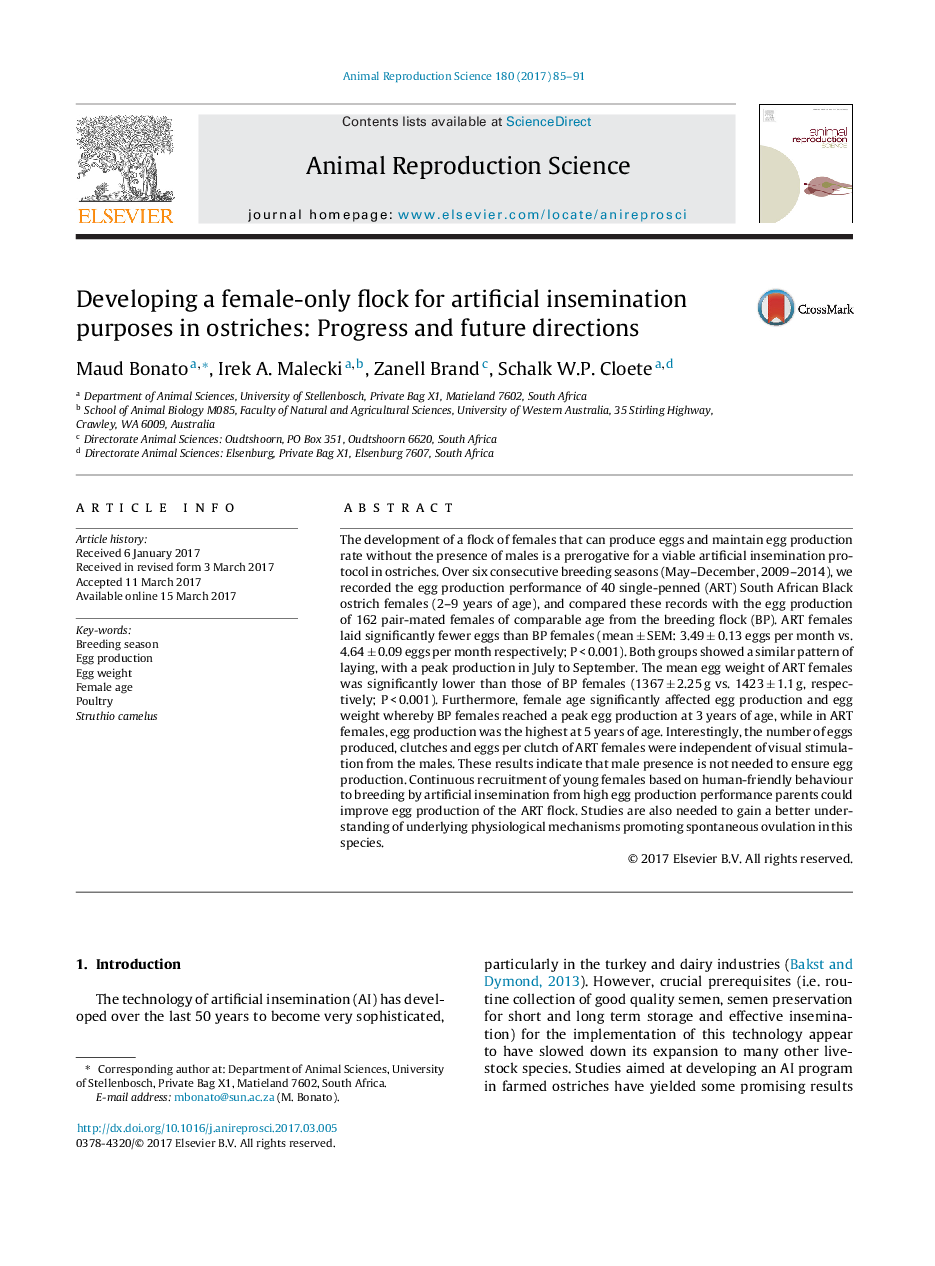| Article ID | Journal | Published Year | Pages | File Type |
|---|---|---|---|---|
| 5520264 | Animal Reproduction Science | 2017 | 7 Pages |
â¢Female ostriches appear to ovulate spontaneously.â¢Presence of males not needed to stimulate egg production.â¢Pairing with males results in more and heavier eggs.â¢Large variation observed between females.â¢Consideration to be given to studies investigating stimulation of egg production.
The development of a flock of females that can produce eggs and maintain egg production rate without the presence of males is a prerogative for a viable artificial insemination protocol in ostriches. Over six consecutive breeding seasons (May-December, 2009-2014), we recorded the egg production performance of 40 single-penned (ART) South African Black ostrich females (2-9 years of age), and compared these records with the egg production of 162 pair-mated females of comparable age from the breeding flock (BP). ART females laid significantly fewer eggs than BP females (mean ± SEM: 3.49 ± 0.13 eggs per month vs. 4.64 ± 0.09 eggs per month respectively; P < 0.001). Both groups showed a similar pattern of laying, with a peak production in July to September. The mean egg weight of ART females was significantly lower than those of BP females (1367 ± 2.25 g vs. 1423 ± 1.1 g, respectively; P < 0.001). Furthermore, female age significantly affected egg production and egg weight whereby BP females reached a peak egg production at 3 years of age, while in ART females, egg production was the highest at 5 years of age. Interestingly, the number of eggs produced, clutches and eggs per clutch of ART females were independent of visual stimulation from the males. These results indicate that male presence is not needed to ensure egg production. Continuous recruitment of young females based on human-friendly behaviour to breeding by artificial insemination from high egg production performance parents could improve egg production of the ART flock. Studies are also needed to gain a better understanding of underlying physiological mechanisms promoting spontaneous ovulation in this species.
